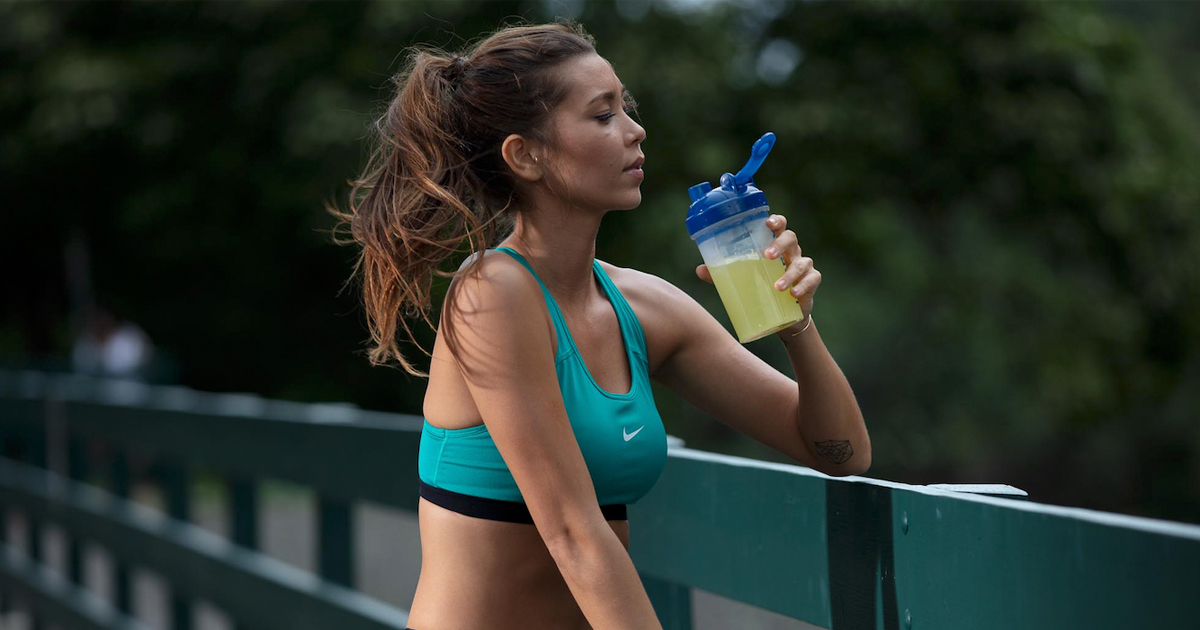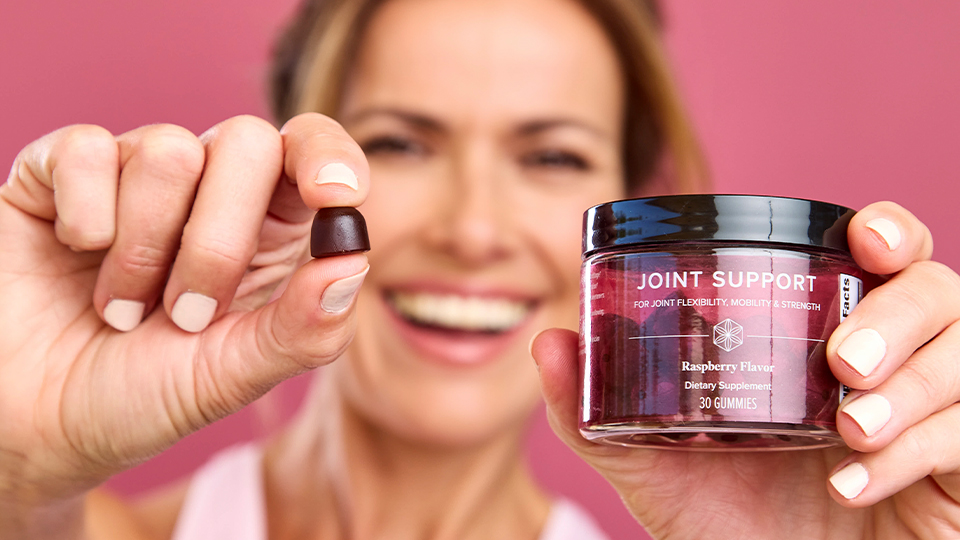With summer just around the corner and many of us pursuing a healthy and active lifestyle, staying hydrated is key. Our bodies are approximately 60% water, so the fluids we ingest play an essential role in our energy production, our exercise performance, and even our feelings.
Generally speaking, healthy adults should drink a minimum of 2 liters of fluids per day, and those who exercise require additional fluids based on the percentage of water weight lost during workouts. A body that’s improperly hydrated, by as little as 1%, can result in an electrolyte imbalance — causing undue stress to the cardiovascular system and impairing physiological function and performance (1).
Hydration and replenishment requirements will vary from person to person, depending on body size, gender, activity level, climate, and health status (1, 2). An easy rule of thumb to follow is to drink so that you never find yourself thirsty. By doing so, your body won’t have to play hydration catch-up after every activity. But what can you use to effectively hydrate? In addition to water, other fluids can provide excellent hydration and rehydration that count toward your overall daily water intake.
We become hydrated through three sources: water, food, and metabolic water production (3). Foods provide varying degrees of water to the body, allowing us to actually “eat our water” for optimal hydration. Vegetables and fruits such as lettuce, celery, tomato, cucumber, melon, and citrus all contain a high percentage of water. Dairy products, including kefir, yogurt, and even IsaLean® Shakes, are also water-rich and can replenish and hydrate the body. Foods that contain a high percentage of water, and that contain electrolytes and micro and macronutrients, are important when rehydrating, especially after exertion or extended durations in warm environments (4).
Staying properly hydrated is important for losing and maintaining weight. For weight loss, it is recommended to drink 16 ounces of nonsugary fluids before meals to increase satiety. The European Journal of Obesity published a study describing the beneficial effects of water intake on weight loss and weight maintenance and noted that the act of ingesting calorie-free fluids before meals prevented excessive eating. This study, and others, have concluded that a glass of water, a cup of coffee, or any other sugar-free beverage before enjoying meals and snacks is beneficial for achieving optimal weight loss goals (5-7). Also, a body that is properly thermoregulated, via adequate hydration, burns more calories and is linked with better weight loss outcomes (5-7).
For many, consuming adequate electrolytes can be very beneficial and improve not only your Shake Day but also your Cleanse Day experience. To support your hydration goals, Isagenix has formulated AMPED™ Hydrate. Naturally sweetened with stevia, AMPED Hydrate replenishes electrolytes with a superfruit electrolyte blend and four essential electrolyte minerals: sodium, potassium, calcium, and magnesium. Vitamins C and B complex provide nutrients for optimal performance and recovery for those that exercise.
The bottom line is, to stay hydrated, you do not need to solely drink plain water. Instead, consume plenty of fluids and fresh fruits and vegetables throughout your day. IsaLean Shakes, IsaPro®, and especially AMPED Hydrate all can be effectively used as well. These products hydrate the body and replace depleted electrolytes in a capacity that also sustains energy and satiety.
References
- Von Duvillard SP, Braun WA, Markofski M, et al. Fluids and hydration in prolonged endurance performance. Nutrition. 2004 Jul-Aug;20(7-8):651-6.
- Lafontan M, Visscher TL, Farpour-Lambert N, Yumuk V. Opportunities for intervention strategies for weight management: global actions on fluid intake patterns. Obes Facts. 2015;8(1):54-76.
- Nissensohn M, López-Ufano M, Castro-Quezada I, et al. Assessment of beverage intake and hydration status. Nutr Hosp. 2015 Feb 26;31 Suppl 3:62-9.
- Maughan RJ, Goodburn R, Griffin J, et al. Fluid replacement in sport and exercise–a consensus statement. Br J Sports Med. 1993 Mar;27(1):34-5.
- Lafontan M, Visscher TL, Farpour-Lambert N, et al. Opportunities for intervention strategies for weight management: global actions on fluid intake patterns. Obes Facts. 2015;8(1):54-76.
- Perrier ET, Armstrong LE, Daudon M, et al. From state to process: defining hydration. Obes Facts. 2014;7 Suppl 2:6-12. doi: 10.1159/000360611.
- Borys JM, de Ruyter JC, Finch H, et al. Hydration and obesity prevention. Obes Facts. 2014;7 Suppl 2:37-48.





